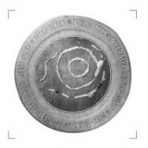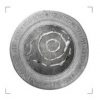The archaeometric analysis carried out on the coins of the neumed project are almost completed. The large amount of data is providing useful information to answer at historical-numismatic questions. In particular, the use of different types of analytical techniques hallowed us to study the archeological samples from all points of view. Now, we are able to know information about the provenance of the metal and the ore source, the production technology and the alterations products.
The interpretation of the datasets focused on specific coins type, as well as, evidences obtained from particular contexts, allowed us to suggest new interpretative frameworks and different research approaches especially about methodology.
When we start to analyze, using recent archaeometric techniques, archeological findings such coins, which already show many critical issues due to both the technology of production, and their intrinsic nature, we can asses that the most reliable results are those obtained comparing and elaborating all the data coming from experiments and investigation techniques.
All samples, a total of 186 coins (182 silver and mixed silver coins, dated from 8th to 14th century, and 4 large coins belonging to 13th – 14th century) has been chosen and organized following precise typological seriations, both for the well known types, as well as and for those coins that needed a more precise attribution. The composition of all coins were investigated using the p-XRF analysis (Fig.1), undoubtedly one of the most agile and non-destructive techniques available today for this purpose.

Even though we are aware that this technique can investigate only a superficial portion of coins, we proceeded to a wide analysis campaign (investigating a statistically high number of specimens for each coins seriation) in order to provide a whole picture of coin data set and to detect qualitative information useful to deepen the production techniques. The research work then focused on the comparison between different analytical techniques.
The pXRF results provided data sets that were sometimes homogeneous and in other cases completely unexpected: this allowed us to further select some coins on which we performed more detailed chemical and textural analysis by means of SEM-EDS electron microscopy available at the University of Florence – Centro di Microscopia Elettronica e Microanalisi (M.E.M.A)(Fig.2).

The comparison between the chemical composition obtained by surface techniques (pXRF), and electron microscopy allowed us to identify the real content of the Cu and Ag both inside and on the surface of the artifact, the presence of levels of surface Ag-enrichment, to evaluate the preservation of artifact and, thanks to textural analysis, to obtain important information about production technology.
During the last step of the numismatic task, we decided to undertake, some experimental archaeology in collaboration with Alessandro Pacini, an archaeometallurgical expert, trying to reproduce various Ag-Cu alloys, according to the mean composition detected in the various monetary series.
The aim is to reproduce, following what is known in the bibliography, in the treatises of ancient metallurgy and in the recent scientific papers, similar coins for morphology (size and weight) and composition, to archeological sample that are under study (Fig. 3).

All the materials used during the experiment, from the pure metal to the ingots up to the modern coins replica, will be sectioned and analyzed with various analytical methods (in particular p-XRF and SE-EDS) to evaluate the accuracy and repeatability of the different analytical methods and to investigate in detail the internal textures of metals due to the employed production techniques.


